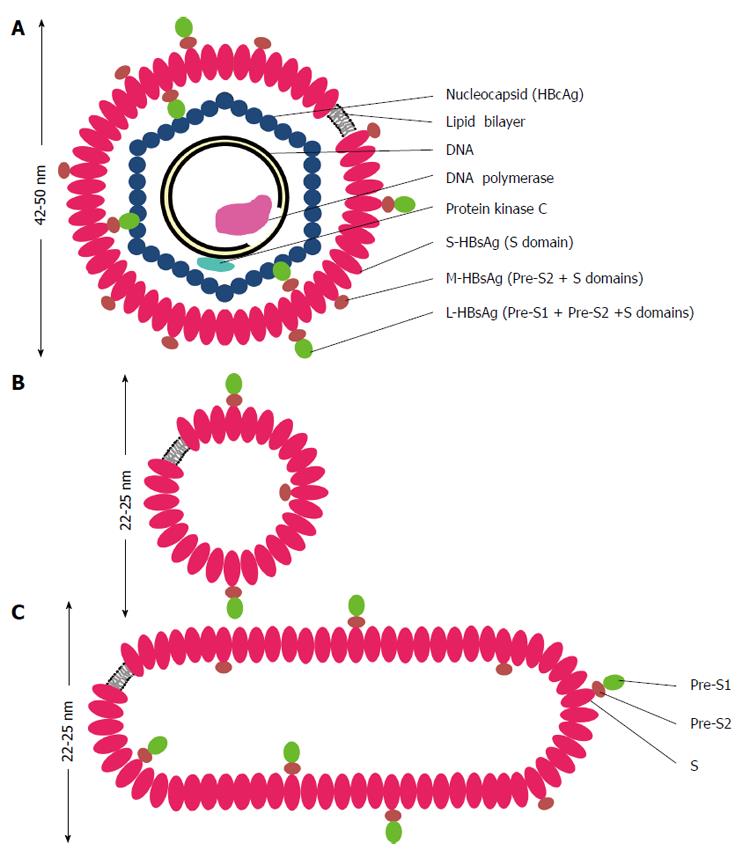Copyright
©2014 Baishideng Publishing Group Inc.
World J Gastroenterol. Sep 7, 2014; 20(33): 11650-11670
Published online Sep 7, 2014. doi: 10.3748/wjg.v20.i33.11650
Published online Sep 7, 2014. doi: 10.3748/wjg.v20.i33.11650
Figure 1 Schematic representations of hepatitis B virus virion (A), spherical (B) and filamentous (C) particles.
The envelope of hepatitis B virus (HBV) virion or the Dane particle (A) contains three forms of hepatitis B surface antigen (HBsAg): large (L-) HBsAg has the PreS1, PreS2 and S domains; middle (M-) HBsAg contains the PreS2 and S domains; and small (S-) HBsAg has only the S domain. The representations of the L-, M-, and S-HBsAg have no quantitative or positional significance. The L-HBsAg interacts with the viral capsid which is made of many copies of the core protein (HBcAg). The capsid encapsidates a partially double stranded DNA molecule, a DNA polymerase containing the primase and reverse transcriptase activities. The protein kinase C phosphorylates the capsid protein. The diameter of HBV virion is about 42 nm when it is stained negatively and observed under a transmission electron microscope, but it appears bigger in cryo-electron microscopy. The spherical (B) and filamentous (C) particles have a diameter about 22 nm in negative staining and appear bigger in cryo-electron microscopy. The length of the filamentous particle varies. Both the non-infectious particles contain the L-, M-, S-HBsAg and lipid.
- Citation: Tan WS, Ho KL. Phage display creates innovative applications to combat hepatitis B virus. World J Gastroenterol 2014; 20(33): 11650-11670
- URL: https://www.wjgnet.com/1007-9327/full/v20/i33/11650.htm
- DOI: https://dx.doi.org/10.3748/wjg.v20.i33.11650









